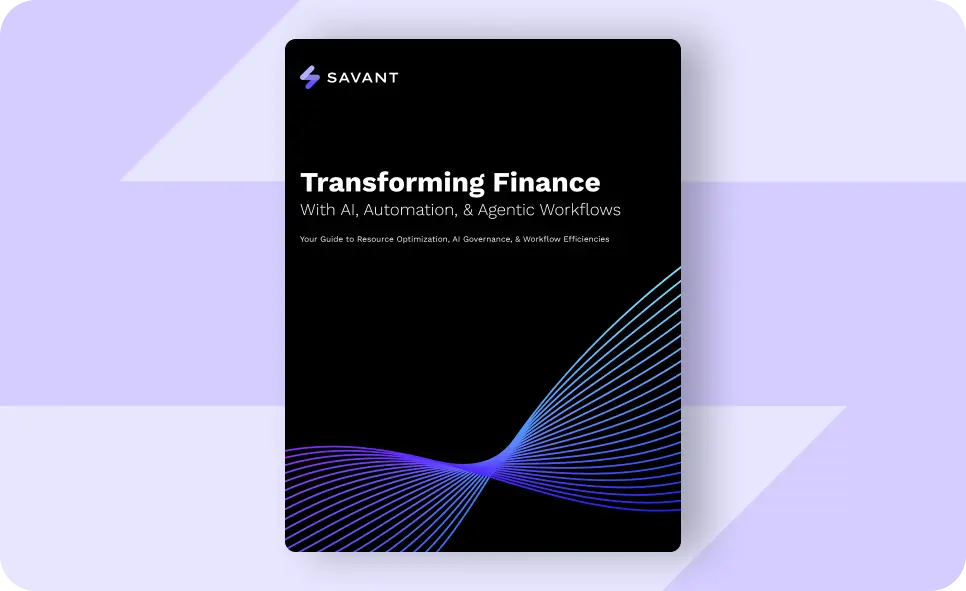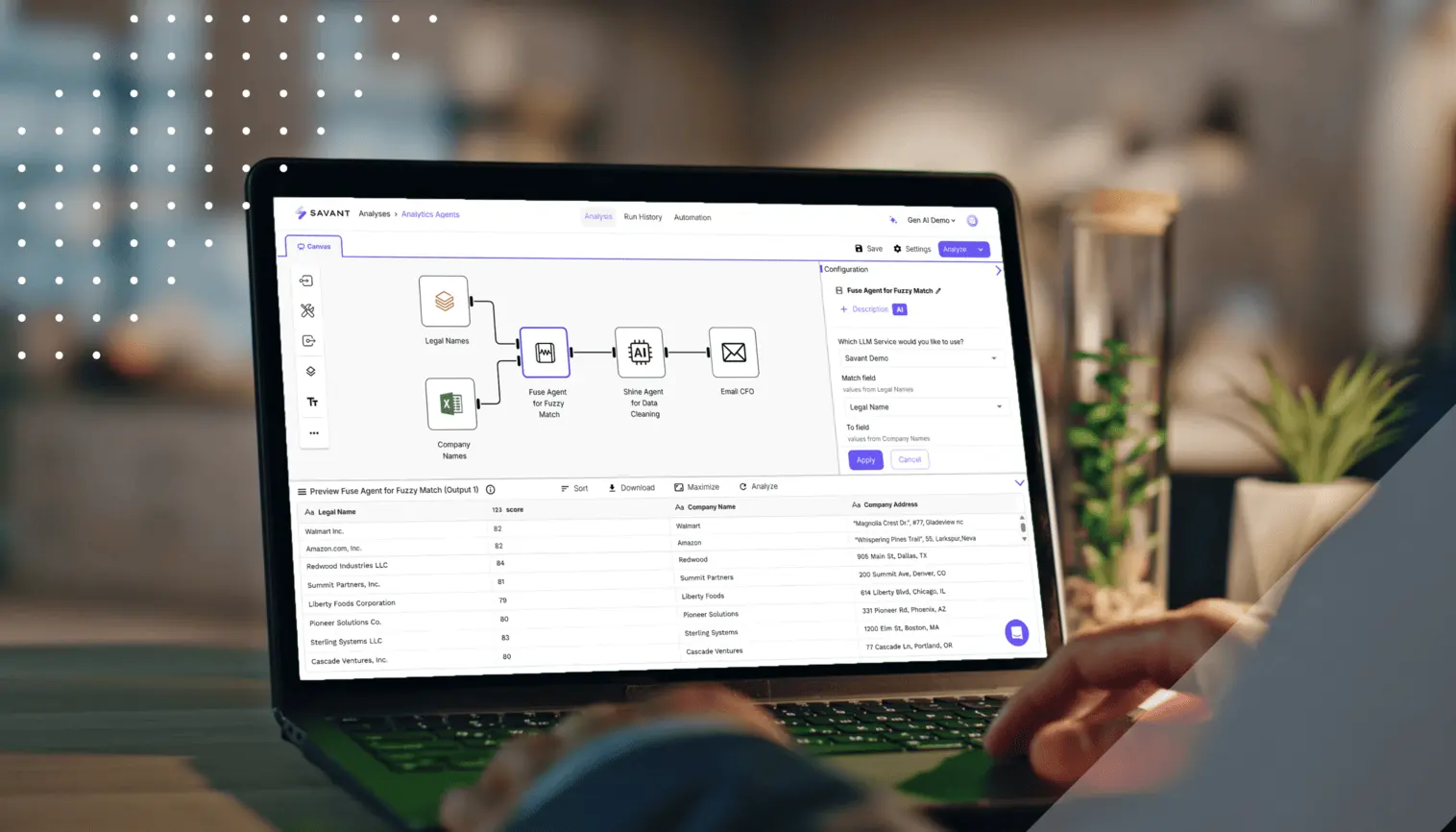What Is Data Governance? Models, Benefits, and Challenges

Suhail Ameen
September 26, 2025 5 Min Read


See Savant AI Agents turn unstructured data into usable insights — live.
Register
AI and Automation Are Reshaping Finance, Tax, and Accounting — See How.
Download Now
Unstructured data slows finance and analytics. Watch the fix in our Fall Release webinar.
Save Your Spot

Data now underpins nearly every decision and process. With that reliance comes a higher bar for clean, consistent, and compliant data, yet many teams still struggle with gaps in quality, ownership, and controls.
A strong data governance framework defines policies, roles, and controls so data remains accurate, secure, and used ethically throughout its lifecycle, from acquisition and use to storage and disposal. This article explains what data governance is, how it works, the benefits and challenges, and how to implement it effectively.
Data governance is the discipline of setting and enforcing policies for how data is collected, stored, analyzed, shared, and retired. It provides a structured approach to security, integrity, accessibility, and compliance.
With data becoming a crucial and strategic business asset, strong governance is now a core organizational strategy. It enables organizations to make informed decisions and utilize their data assets responsibly.
Many organizations conflate data governance with data management. They’re related but distinct. Data management covers the technical operations of the data lifecycle (ingestion, modeling, transformation, retrieval). Data governance sets the rules, accountability model, and oversight that ensure those operations handle data correctly at every stage — who may access which data, how quality is maintained, and what rules guide use and sharing.
Governance turns scattered data practices into a consistent, organization-wide standard. Consider a common scenario in e-commerce: customer records spread across sales, logistics, and support. If each system captures names and contact details differently, small discrepancies snowball during integration. Orders misroute, service teams call the wrong number, segmentation breaks, and reporting loses credibility. A governance program establishes clear data standards, ownership, and validation so that records match across systems, insights stay reliable, and downstream processes don’t fail under load.
Effective governance is a team sport with defined roles:
Chief Data Officer (CDO) – Sets strategy, sponsors the governance program, assigns ownership, and ensures policies are adopted and reviewed. Coordinates training and periodic effectiveness checks.
Data Owners – Senior leaders accountable for specific data domains (e.g., customer, product, finance). They approve standards, grant or revoke access, and accept responsibility for data quality in their domain.
Data Stewards – Day-to-day operators who maintain definitions, catalogs, lineage, and quality rules; monitor issues; and coordinate fixes with data producers and consumers.
Regulatory/Compliance Officers – Align policies with applicable laws and industry standards, assess compliance risk, and oversee audits and attestations.
Many organizations also charter a data governance council, which is a cross-functional group (IT, security, legal, analytics, product) that approves policies, resolves conflicts, and prioritizes roadmap items.
Data governance is not a one-step process, but a series of interconnected practices, the foundation of which rests on the following key pillars:
Name an executive owner and an operational steward for every critical dataset, and publish that roster. Owners approve standards and access; stewards keep definitions current, triage issues, and coordinate fixes. This clarity shortens decision time and gives data incidents a clear escalation path.
Define what “good” means per domain (completeness, accuracy, timeliness, consistency), then attach rules to the points where data is created and transformed. Use profiling to find drift, set thresholds, and route exceptions with owners and due dates. Track a few KPIs like match rate, null rate, and freshness to show progress.
Turn policy into everyday steps across your tools. Define who does the work, who approves it, who gives input, and who needs to be notified for common changes (for example, adding a new customer field). Write this into a one-page handoff guide so that source app changes, warehouse models, pipelines, and reports move in sync.
Grant access by least privilege and mask or tokenize sensitive fields by default. Log every read/write in a way auditors can query, and align retention, consent, and data-sharing rules with the regulations you face. Review access on a cadence and tie removals to offboarding so exposure windows stay short.
A governance model is your implementation guide: it defines decision rights, processes, roles, and the tooling you’ll use to enforce policy. Most programs adopt one of three patterns and adjust over time as the organization grows.
A single, central team (or council) sets policy, approves standards, and enforces controls across the enterprise. Decisions roll up to this group to keep definitions and rules consistent.
Each business unit or region governs its own data domain. Teams make local decisions and optimize for their operations with minimal central oversight.
A central authority defines common policies, shared definitions, and minimum controls. Domain teams (BU/region/function) implement and operate governance locally, reporting back to the center.
Many programs start centralized to establish standards, then evolve to federated models as domains mature and stewardship capacity grows.
There are certain well-established data governance standards and frameworks that organizations can adopt. These provide a structured approach to implementing governance, ensuring compliance, and aligning with industry best practices.
Here, we will briefly discuss the most popular frameworks:
Designed and managed by the Data Management Association (DAMA), DMBOK is considered the gold standard for data governance. It outlines the best data governance practices across nine key areas and also establishes specific roles and responsibilities for data owners, data stewards, and other data professionals. It is ideal for an organization looking to implement a comprehensive, enterprise-wide approach to data governance.
COBIT is a globally recognized data governance framework developed by ISACA (Information Systems Audit and Control Association). It focuses on aligning data governance efforts with business objectives to make the best use of IT investments. The framework also provides a tactical roadmap for risk evaluation and mitigation within data governance activities. It is best suited for IT-heavy enterprises that want to align data governance with broader IT and business objectives.
DGI is one of the oldest and most actionable frameworks that outline all the processes, rules, and people needed to implement and sustain a successful data governance program. It balances both business and IT perspectives, making it highly adaptable across industries. It is ideal for organizations looking for an actionable playbook to launch or refresh governance with clear roles and workflows.
Implementing a data governance strategy offers a plethora of benefits. The most notable ones include:
By now, we understand the importance of data governance in an organization. However, standing it up takes intent and clarity. Many businesses struggle with the implementation of data governance policies due to the following challenges:
Practical fix: start with one domain (e.g., customer or product), assign an executive owner and a working steward, publish definitions, and add lightweight validation where data is created. Expand once you see results.
Savant helps teams operationalize governance inside their daily analytics workflows. The platform connects to your existing sources, keeps context attached to data (owners, policies, lineage), and automates the routine steps that produce a clean trail.
Growing data volumes and scrutiny demand a structured approach to quality, access, and accountability. A practical governance program — clear ownership, shared definitions, validation at capture, and visible lineage — keeps data trustworthy for analytics and regulatory reviews.
Savant makes that operating model stick by embedding policies, quality checks, and evidence capture where work happens, so teams spend less time chasing issues and more time using data to move the business forward.





